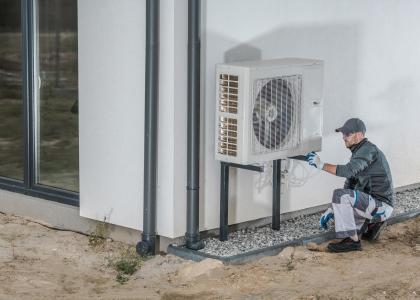Many of the lowest-income U.S. households spend nearly one-fifth of their income on gasoline—three times more than the average U.S. household, according to an analysis released today by the American Council for an Energy-Efficient Economy.
Investments in transportation infrastructure have historically displaced low-income communities and communities of color, pushing them farther and farther away from employment centers. Land-use policies that favor personal vehicles and encourage sprawl have left these communities with inconsistent access to efficient, low-carbon forms of transportation, often forcing them to use inefficient personal vehicles to get to work and essential services. The result is that too many Americans have high expenses for vehicles, fuel, insurance, and maintenance. In many cases, this creates higher transportation burdens (defined as the portion of annual income spent on transportation costs).
ACEEE’s latest analysis focuses on the energy-use component of transportation burdens, specifically gasoline costs. We used 2013 self-report data from the American Housing Survey (AHS) to estimate transportation energy burdens. While this information is somewhat dated and doesn’t reflect the recent emergence of technology-enabled mobility options or the impact of the COVID-19 pandemic, these data let us estimate real-world burdens without relying on modeled monthly gasoline expenditures. We analyzed data from both the national and metropolitan samples from AHS. The metropolitan sample contains data on 24 metropolitan statistical areas and represents approximately 28% of the total U.S. population.
In the national sample, low-income households had an average burden of 13.8%, compared to just 4.1% for higher-income households. A deeper dive into how gasoline costs vary by income shows that this burden is even higher, 18.3%, for the very lowest-income groups, i.e., those that earn less than $20,800 annually, indicating a need for policy interventions that focus on this population.
ACEEE’s analysis also confirms that Black, Hispanic, and Native American communities bear greater gasoline burdens than their white counterparts. Nationally, Native American households experience the highest burdens at 10.9%, followed closely by Hispanic and Black households at 9.2% and 9.1%, respectively. These burdens vary quite a bit geographically. For instance, Black households in the South Central United States (Texas, Oklahoma, Arkansas, and Louisiana) see much higher burdens than in other parts of the country. The COVID-19 pandemic has likely made some of these differences even starker.
Access to public transit and other mobility options can help address high transportation expenses for low-income households. However, public transit saw a steep drop in fare-based revenues before and during the pandemic. As a result, transit agencies have been forced to roll back service and infrastructure expansion. Because public transit disproportionately serves low-income residents and commuters of color, these changes have a direct impact on the affordability and accessibility of transportation for the most economically vulnerable households.
To comprehensively mitigate high gasoline burdens, policymakers should integrate transportation, land-use, and housing policy solutions to create livable, sustainable, healthy communities. Similarly, solutions should do more than just improve the efficiency of personal vehicles, which only saves money for those who rely on cars or light trucks. We must also improve access to a wide array of affordable and efficient transportation options, like public transit and shared bicycles and scooters. Tailored policies are needed at the city, state, and federal levels to address the specific barriers and burdens encountered by low-income households as well as Black, Hispanic, and Native American communities. To develop that suite of tailored policies, cities and communities should engage with those residents who are most directly impacted by transportation options to identify key mobility needs and gaps, and to develop solutions while keeping costs low.


